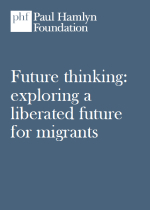Report on learning at European foundations published
The European Philanthropy Learning Initiative has published ‘Shedding Light on our own Practice: Lessons about the Impact and Effect of our own Behavior’. The report examines the assessment and learning practices of foundations across Europe and shows that foundations are establishing new relationships for learning in and among organisations. They are also developing new internal capacities and processes.
Acknowledging that foundations have come to see that how they make grants and give support is just as important as who and what they support, the report explores three issues. Firstly, it examines the premise that more can be done with the same resources, asking whether foundation funding could have greater impact if the learning and knowledge culture were enhanced. Secondly, it addresses the question of how to promote strategic, collaborative and transparent philanthropy, which encourages the use of academic and applied research tools, guidelines and platforms in pursuit of this. Finally, it asks how to develop a more dynamic learning and information environment.
The realisation of the importance of learning to achievement of organisational goals is at the heart of developments towards more inward orientation and critical engagement with practices. As the report points out, ‘the evaluation process is consciously evolving from being an exclusive tool for learning and assessing the effectiveness of others to shedding light on internal practice.’ It indicates that management style, substantive issue priorities, and often the newness of the institutions play a role in shaping organisational learning cultures. Within foundations, CEOs, boards and programme staff often take the lead in developing a learning culture, while external consultants are also used periodically.
The increased importance attached to evaluation and learning is also affecting foundations’ relationships with grantees; many now design their evaluation criteria in partnership so as to be able to genuinely integrate the view of their grantees, while remaining in close consultation with them. This allows improvement to be made during the life of a grant rather than in retrospect. Such a culture of ‘greater openness’, the report indicates, also encourages all sides to be comfortable with and extract value from learning from failures.
Some organisations identify formal indicators against which they determine success. Others take a more holistic approach to gauge progress in a sector. Achieving sustainability and replicability are increasingly cited as measurements for success.
The foundations surveyed are increasingly appreciative of peer and nascent communities of practices, enhanced by the growth of funder networks and other forms of partnership. Such communities, however, need further development with the objective of facilitating peer learning. Learning cultures would also benefit from the development of philanthropy infrastructure in areas such as staff training, research, think-tanks and support organisations, which is underfunded and uncertain at the moment.
The report was supported by Adessium Foundation, FACT, Fondation Lombard Odier, Oak Foundation and Pears Foundation and built on interviews with 26 foundations. It was prepared by Judith Symonds, David Carrington and Karen Weisblatt. The learning practices at Paul Hamlyn Foundation are presented as a brief case study.
David Carrington shared some perspectives from the research in a contribution to the PHF Yearbook 2011-12, published last summer.
In November, PHF published ‘Assessing Impact’, an outline of approaches taken to impact assessment at the Foundation. It presents the framework used to assess impact, categorising a set of outcomes achieved through activities funded by the Foundation. Fourteen main outcomes were identified, and a representative sample of 120 grants (51 per cent of total grants completed during the period 2007-12) was reviewed for impact against each outcome. The result is an ‘impact map’, indicating the extent to which the Foundation has had impact in different areas.


